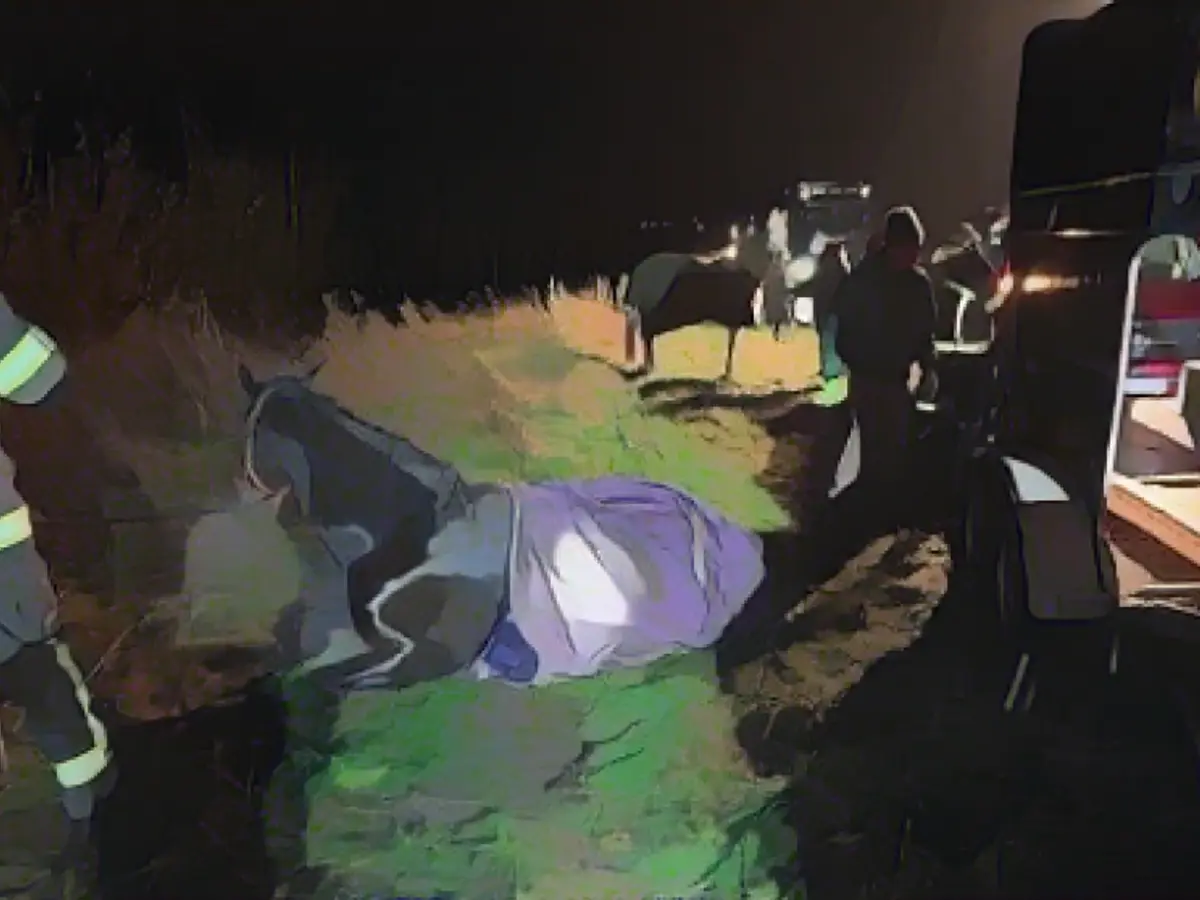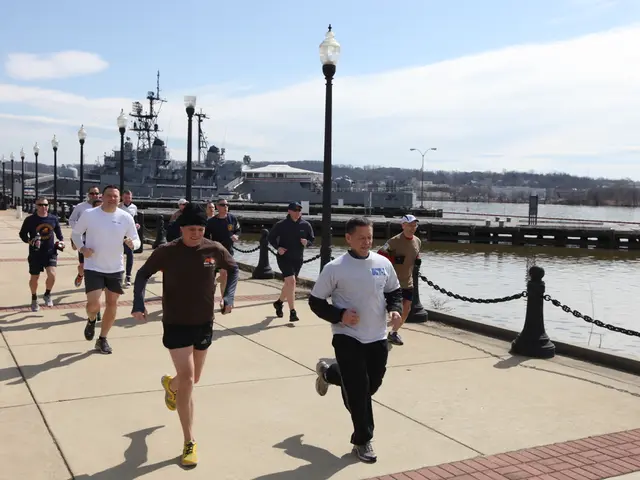Unfortunate Tuesday Evening Mishap: Horse Meets Tragic End in Trailer Mishap
As the sun began to set on a chilly Tuesday evening, an unlucky sequence of events unfolded. A transport truck carrying two horses was making its way between two traffic circles when, inexplicably, the driver hit the brakes, causing the trailer to lurch and the dark brown stallion on its right-hand side to crash horribly into the trailer door. The force of the collision was so intense that it shattered the door and trapped the panicking horse inside, as per eyewitness reports.
The local fire department was alerted to the scene and swiftly dispatched a nearby vet to sedate the traumatized animal before attempting to free it. However, the horrendous injuries sustained by the unfortunate horse proved too much, and despite the valiant efforts of the fire department, police, and attending vet, the horse had to be euthanized at the scene of the grisly accident on the main road in Werne.
Fortunately, the grey horse traveling companion emerged unscathed from the violent collision and was taken to a nearby stable for recovery.
The Ruhr area regional news reported a series of unfortunate accidents on the busy highway that day, with the tragic horse incident being one of them. Police officers were on the scene to manage traffic and ensure safety for the passing motorists.
In the aftermath of this distressing incident, several best practices can be employed to safeguard horses during transport, especially in the event of accidents or sudden stops.
- Reinforce your trailer: Invest in sturdy, well-constructed trailers made of materials like galvanized steel and opt for SafeBump roof systems to improve safety in case of collisions.
- Ensure proper ventilation: Each stall should have a roof vent, and the walls should be insulated to maintain good air flow and temperature, preventing the horse from getting too hot or cold during transportation.
- Be prepared for emergencies: Use rear-facing trailers, which can make the horse feel more secure and facilitate easier escape in case of necessity.
- Load and unload horses safely: Use trailers equipped with side loading doors or ramps and SafeTack reverse swing-out tack compartments to make loading and unloading easier and safer for both the horse and the handler.
- Regularly maintain and inspect your trailer: Monitor your trailer's tire safety and ensure proper load securement to minimize the risk of accidents.
- Educate your driver: Encourage safe driving habits and caution on icy roads to reduce the likelihood of collisions. Ensure they are aware of the trailer's performance and can manage the extra weight effectively.
Employing these strategies can significantly reduce the likelihood of injuries or escape situations for horses during transport accidents or sudden stops.
News Update:
Note: The preventative measures discussed for horse safety are derived from enrichment data. These guidelines are aimed to improve overall horse safety during accidents or sudden stops without overwhelming the text with excessive details.
Enrichment Data:
Ensuring the welfare of horses during transport, particularly in the event of accidents or sudden stops, involves several best practices.
- Proper Restraints:
- Employ strong, adjustable halters and lead ropes to secure the horse, considering using breakaway straps or safety ties to reduce risks in case of sudden stops or unexpected movements.
- Stabilization:
- Thoroughly inspect the trailer before loading by examining the flooring, lights, tires, ventilation, and ramps to prevent any potential hazards.
- Immobilization:
- If the horse is injured, immobilize the affected limb or body part before loading it into the trailer. This can be achieved by using a sling under the abdomen and placing trailer partitions close to the horse for stability.
- Head Protection:
- Keep the horse's head loosely secured to prevent self-harm. Utilize protective gear like padded head protectors, hay bales, or bandages.
- Regular Stops:
- Plan regular stops every three to four hours to allow the horse to stretch, relax, and hydrate with fresh water. Offering hay or feed can also help the horse remain comfortable and prevent dehydration.
- Sedation (if needed):
- If the horse is in severe pain, consider administering a medically approved sedative during transport to minimize distress and prevent further injury.
- Proper Ventilation:
- Ensure proper air flow in the trailer by using roof vents, insulating the walls, and ventilating the stalls to prevent overheating in both warm and cold weather conditions.
- Driver Awareness:
- Encourage drivers to remain alert during transportation, driving cautiously and observing traffic conditions, especially on slippery roads. Regularly inspect the truck and trailer for any malfunctions or issues that may impact performance.
By following these guidelines, you can significantly reduce the likelihood of injuries or escapes for horses during accidents or sudden stops during transportation.







